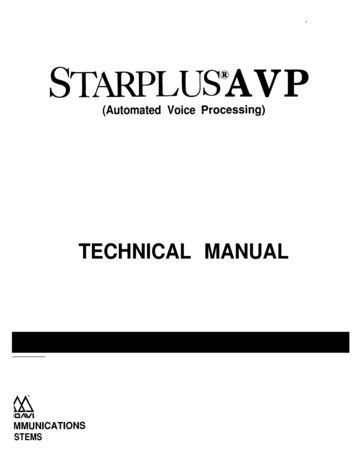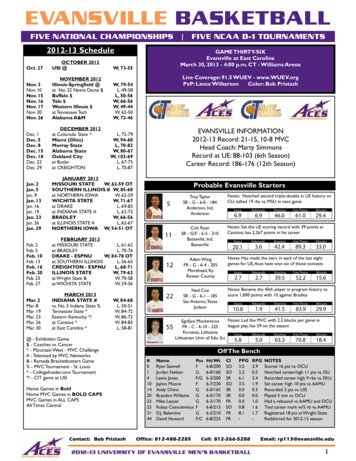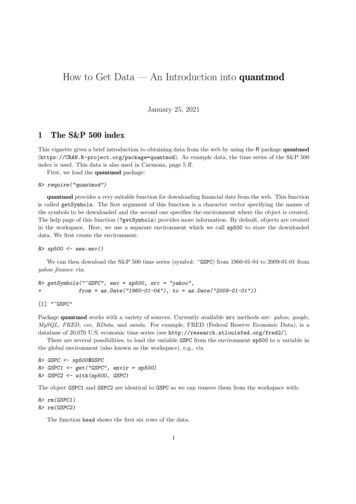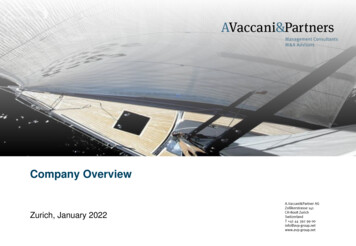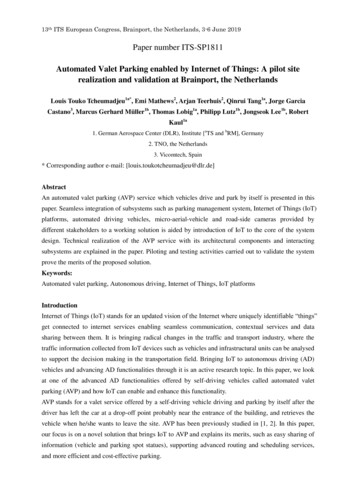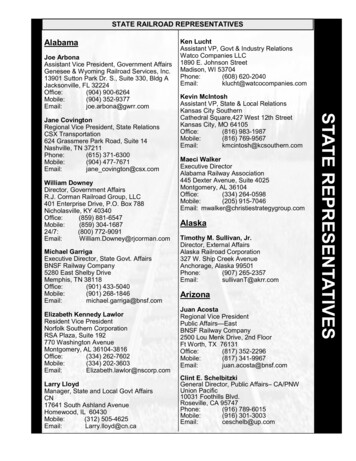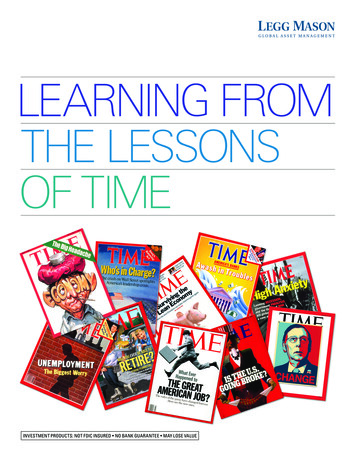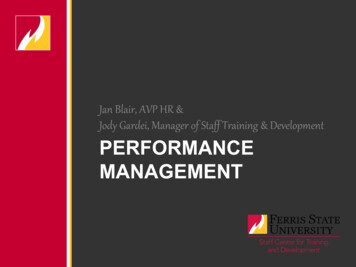
Transcription
Jan Blair, AVP HR &Jody Gardei, Manager of Staff Training & DevelopmentPERFORMANCEMANAGEMENT
ObjectivesDuring this session you will learn: How to have meaningful conversations thatreinforces accountability, trust, and year roundfeedback How to build trust and accountability Best practices for employee recognition Timetable for the process
Today’s Focus Building Trust The Performance Management Cycle Bringing It All Together
What’s the Difference?Performance EvaluationvsPerformance Management
What’s the Difference?Performance Evaluation Represents a culmination ofpast year’s discussionsbetween the supervisor andemployee about theemployee’s performance A small part of PerformanceManagementPerformance Management A continuous process thatcontinues all throughoutthe employee’s Universityemployment Provides supervisor andemployee a sharedunderstanding of jobexpectations
Motivation & EngagementEmployee Disengagement: If manager ignoresemployee: 40% If manager focuses onweaknesses: 22% If manager focuses onstrengths: 1%
The Five Elements ofPerformance ManagementPage 4
Performance Management Cycle1. gnizing
Plan Development The plan should:– Align with organizational needs and demands– Meet the needs identified– Be co-created with your staff
SMART Goals Does it have a deadline?Does it have details about who is doing what?How you will know you have achieved it?Do you have or can you get the resources(time, money, support) to accomplish it?
SMART Goals
Practice Making SMART Goals Write an SMART Goal that supports the divisionalgoal Some divisional goals:––––––Stabilize and optimize enrollmentImprove retention/graduation ratesRecruit and maintain a more diverse staffProvide outstanding customer serviceReduce student debtIncrease donor participation and total giving
Engage Employees in the PlanningProcess Set Goals Validate JobExpectations andPerformance Create learningopportunities Keep a journal Build Trust See pages 6, 7, 14, 17, 18 & 20 of theguidebook
Performance Management Cycle1. Planning2. Monitoring3. Developing4. Evaluating5. Recognizing
Monitoring Monitor assignments andprojects Continual process Measure performance Provide timely andongoing feedback Compared againstestablished expectations& standards Keep a journal
The Five Elements ofPerformance ManagementPage 4
Employee Development Plan(EDP)1. Planning2. Monitoring3. Developing4. Evaluating5. Recognizing
Developing Assess developmentalneeds Raise employee’s levelof performancethrough:– Training– Additional assignments– Higher levels ofresponsibility See pages 25-27 in the guidebook
Lynda.com Session Lynda.com sign-in may befound on the Employee tab inMyFSU using the ProfessionalDevelopment icon in theEmployee Quick Links portlet. In the ProfessionalDevelopment Quick Linksportlet, select Lynda.com.Once you’ve logged in, you willbe able to search for videosand set up your playlist.
Lynda.com Session Use the Lynda.com search bar toenter the series or course title(Coaching and DevelopingEmployees). The course you willbe viewing for this program is 1hour and 5 minutes long narratedby Lisa Gates. Use the dropdown arrow to addthe course to your playlist. Now,next time you sign in to Lynda, MyPlaylist will be at the top of yourpage, and this course will be easyto find and watch.
Performance Management Cycle1. Planning2. Monitoring3. Developing4. Evaluating5. Recognizing
Evaluation Planning Evaluate against the setof pre-establishedexpectations andstandards– Performance– Behavior– Attendance See pages 7, 8, 13, 15 & 19in the guidebook
Evaluation Forms HR Performance Evaluation Forms Performance Evaluation Instructions Performance Evaluation Form
Evaluation Meeting Establish rapport Start on a positive note Confirm employee has acopy of the:– Job description– Performance plan– Self-assessment There should be NOsurprises! Pages 8-10 & 13 in the guidebook
Performance Management Cycle1. Planning2. Monitoring3. Developing4. Evaluating5. Recognizing
5 Best Recognition Practices Recognize people based on specific resultsand behaviors Implement peer-to-peer recognition, not topdown Share recognition stories Make recognition easy and frequent Tie recognition to your own company valuesor goals
The Five Elements ofPerformance ManagementPage 4
Bringing it all Together7-11 Conversation Turn to someone near you Tell them in 60 seconds orless what you learned today
Timeline for 2017Step in the ProcessDateEmployee completion of a self-evaluation form, if desired or requiredEarly AprilSupervisor completes the evaluation and submits it todean/director/AVP for review; this is before it is shared with theemployeeBy May 1If the evaluation includes ratings that will require a performanceimprovement plan, the supervisor should work with HR on theevaluation prior to it going to the dean/director/AVP.Before May 1Dean/director/AVP completes review; either returns to supervisor orforwards to VP depending on whether recommended for meritBy May 22When applicable, the VP completes her/his review and returns them todean/director/AVP, who returns to the supervisorBy June 9All evaluations are to be shared face to face with the employee, andsigned copies are to be sent to HRBy June 30Merit pay effective date (if applicable)August 1
Questions?
Lynda.com Session Use the Lynda.com . search bar . to enter the series or course title (Coaching and Developing Employees). The course you will be viewing for this program is 1 hour and 5 minutes long narrated by . Lisa Gates. Use the . dropdown arrow . to add the course to your playlist. Now, next time you sign in to Lynda, My Playlist .
